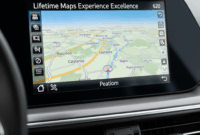Affordable Portable Solar Chargers for Camping: Affordable Portable Solar Charger For Camping
As outdoor enthusiasts continue to seek sustainable energy solutions, affordable portable solar chargers have emerged as essential gear for campers. These devices not only help keep your electronics powered but also enhance your camping experience by harnessing the sun’s energy. Understanding the significance of these chargers is crucial for any camper looking to minimize their environmental footprint while enjoying the great outdoors.
Portable solar chargers provide a convenient and eco-friendly way to charge your devices while camping. With the increasing reliance on technology to navigate, communicate, and document adventures, having a reliable power source is indispensable. Additionally, using solar energy reduces dependency on traditional fossil fuels, making it a greener option for outdoor activities. The affordability of these chargers means that campers of all budgets can access this technology, ensuring everyone has the ability to stay connected and powered up during their adventures.
Definition and Importance of Affordable Portable Solar Chargers
Portable solar chargers are compact devices designed to convert sunlight into electricity for powering various electronics. They are particularly relevant for campers who rely on devices such as smartphones, GPS units, and cameras. The growing concern for environmental sustainability has made solar energy a popular choice for outdoor enthusiasts. The affordability of these chargers ensures that they are accessible to a wide range of campers, enabling them to enjoy the benefits of solar power without breaking the bank.
Features to Look for in Portable Solar Chargers
When selecting a portable solar charger for camping, several key features are critical to ensure optimal performance and usability. These features include:
- Capacity: The capacity of a solar charger, usually measured in milliampere-hours (mAh), determines how much power it can store. Higher capacity allows for charging multiple devices.
- Weight: Since campers often carry their gear over long distances, lightweight chargers are preferable to avoid adding unnecessary bulk.
- Size: A compact design is essential for easy transport, with many chargers folding down for portability.
- Durability: Outdoor conditions can be harsh, so look for chargers that can withstand bumps and drops.
- Weather Resistance: Water-resistant models ensure that your charger can continue to function even in rainy conditions.
Types of Affordable Portable Solar Chargers
There are various types of portable solar chargers available to suit different camping needs. Below is a summary table that Artikels these types along with their advantages and disadvantages.
| Type | Pros | Cons | Examples |
|---|---|---|---|
| Foldable Chargers | Lightweight, portable, high capacity | May require more setup time | BigBlue 28W, Nekteck 21W |
| Backpack-Integrated Chargers | Convenient, hands-free charging | Higher price point | SunJack, ECEEN |
| Mini Chargers | Ultra-portable, easy to use | Limited capacity | Anker PowerPort Solar Lite, RAVPower 24W |
Different types of portable solar chargers cater to various camping scenarios, ensuring that every camper can find a suitable option for their power needs.
Comparison of Top Affordable Models
When it comes to choosing the right solar charger, a comparison of the top affordable models can guide your decision. The following table presents a selection of popular models, including their specifications and prices.
| Model | Capacity (mAh) | Weight (lbs) | Price ($) | Charging Speed |
|---|---|---|---|---|
| BigBlue 28W | 28,000 | 1.5 | 64.99 | Fast |
| Nekteck 21W | 21,000 | 1.2 | 39.99 | Moderate |
| Anker PowerPort Solar Lite | 15,000 | 0.9 | 29.99 | Standard |
User reviews highlight the performance metrics of each model, emphasizing aspects such as charging speed and efficiency, which can greatly influence your choice based on personal needs and experiences.
How to Properly Use a Portable Solar Charger
Setting up a solar charger in a camping environment can maximize its effectiveness. Here are some essential steps and tips:
- Position the charger in direct sunlight for optimal energy absorption.
- Adjust the angle of the solar panels to follow the sun throughout the day.
- Keep the charging devices connected while in sun exposure to ensure continuous charging.
- During cloudy weather, consider charging devices for longer periods to achieve the desired power levels.
- Regularly clean the solar panels to remove dust and debris, enhancing charging efficiency.
Best practices in maintaining your charger will ensure longevity and consistent performance on your camping trips.
Real-Life Applications and User Experiences
User experiences with portable solar chargers have been overwhelmingly positive, especially during prolonged camping trips. Campers often share stories of how these chargers have enabled them to stay connected with friends and family, navigate safely using GPS, and document their adventures with cameras without worrying about battery life.
Testimonials frequently highlight scenarios where solar chargers have provided power during unexpected situations, underscoring their reliability and convenience. These real-world applications demonstrate the substantial benefits of integrating solar technology into outdoor activities, making camping more enjoyable and sustainable.
Budgeting for Solar Charging Solutions, Affordable Portable Solar Charger for Camping
Investing in a portable solar charger can be budget-friendly. Below is a budget table outlining potential costs associated with purchasing solar chargers and accessories.
| Item | Estimated Cost ($) |
|---|---|
| Portable Solar Charger | 30 – 70 |
| Charging Cables | 10 – 20 |
| Power Banks (optional) | 15 – 50 |
Cost-saving strategies include purchasing multi-functional chargers and looking for seasonal discounts. The long-term benefits of investing in solar technology extend beyond immediate savings, offering campers a reliable power source for future adventures, reducing reliance on disposable batteries, and contributing to a more sustainable lifestyle.


